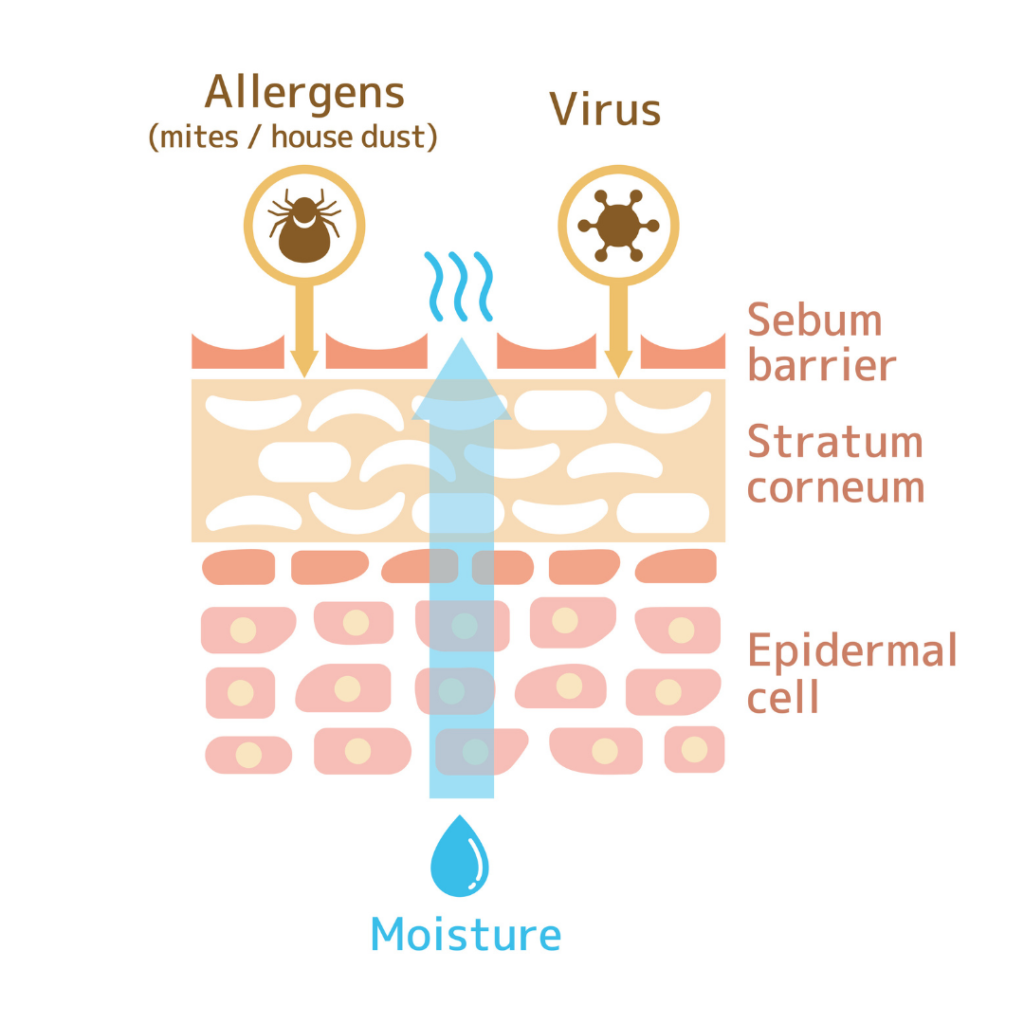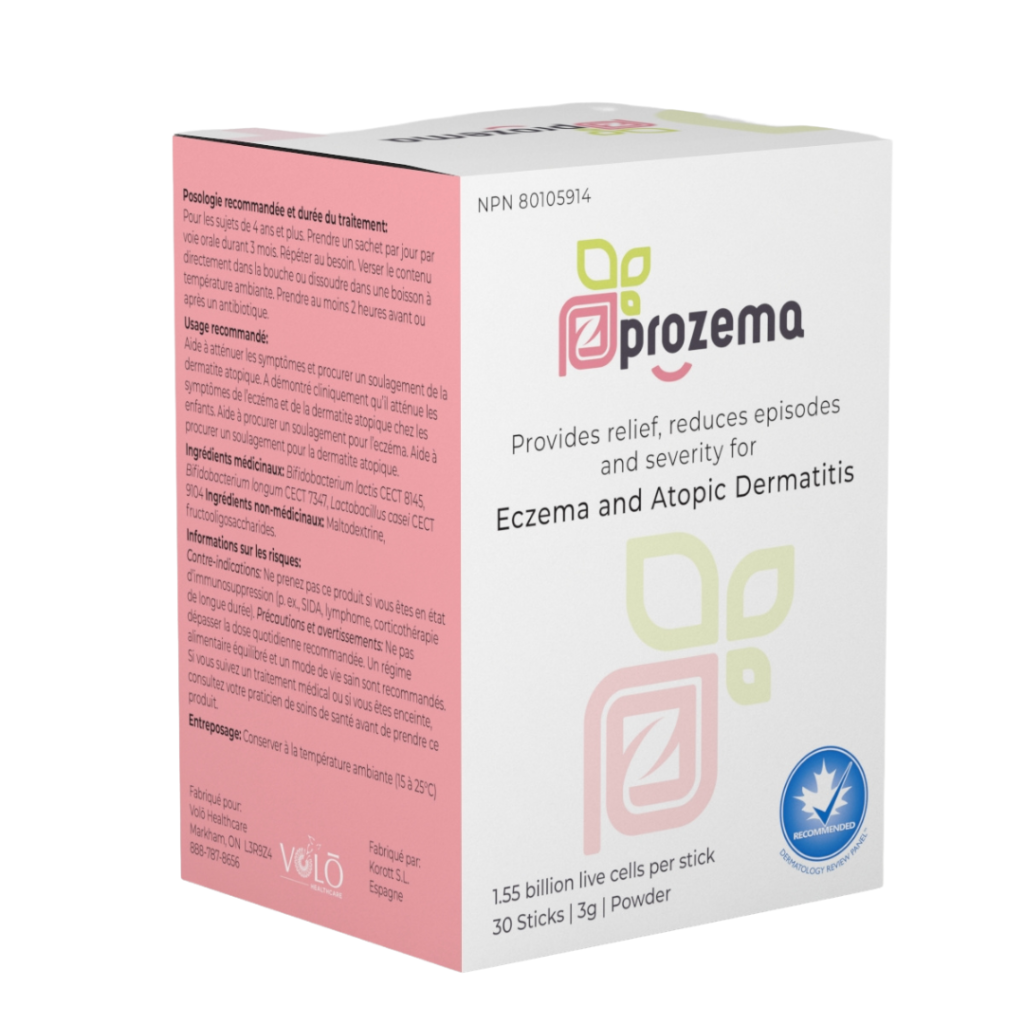
Skin Barrier Defects In Atopic Dermatitis
Atopic Dermatitis | Skin Barrier | How To Repair Your Skin Barrier | Atopic Dermatitis Treatments | Probiotics | ProZema
What Is Atopic Dermatitis?
The role of skin barrier defects in atopic dermatitis offers an insight into managing the condition. It is important to understand what atopic dermatitis is when looking for ways to manage it.
Atopic dermatitis is the most common type of eczema. It is a chronic skin condition and causes itchy, dry skin.
While atopic dermatitis generally starts within the first six months of a baby’s life, it can occur at any age.
The symptoms of atopic dermatitis are dry skin and itchy, red rashes. The skin can even have small bumps which are sometimes filled with pus. These pus-filled bumps can leak when you scratch them.
In children and adults, the rashes occur within folds of skin. For instance, the rashes are commonly seen in the elbow creases, ankles, wrists, and the back of the neck.
These are not the only areas of your body that can be affected by atopic dermatitis. The dry skin associated with atopic dermatitis can also affect your face. The area around your lips, your eyelids, and even eyebrows can become very dry.
What Is The Skin Barrier?
Now that you know about atopic dermatitis and its symptoms, it is important to learn about the skin barrier.
First, your skin has three layers. These are the epidermis, dermis, and hypodermis. The epidermis is the top layer. The dermis is the middle layer and contains nerve endings, hair follicles, and your sweat glands. Lastly, the hypodermis, which is also known as subcutaneous fat, gives your body insulation against the elements.
The skin barrier is the outermost layer of your skin. It is also known as the sebum barrier and is composed of skin cells and lipids arranged together to keep you protected from the outside environment. This layer of your skin also helps to maintain your body’s water balance.
As mentioned before, atopic dermatitis leads to itchy rashes and dry skin. With atopic dermatitis, your immune system becomes overactive and triggers inflammation. It is this inflammation that damages your skin barrier.
This inflammation also increases blood flow, causing an itching sensation. Scratching your skin can lead to further inflammation, which causes more itchiness. This is the itch-scratch cycle of atopic dermatitis.

What To Do When Your Skin Barrier Is Damaged?
Repeated scratching can leave your skin looking red and raw. Over time, your skin can become thick and chafed due to the itch-scratch cycle.
While skin barrier defects in atopic dermatitis continue the itch-scratch cycle, there are several ways to take care of your skin and manage your or your child’s symptoms.
Here are some of the actions you can take to start repairing the damage to your skin barrier:
- Maintain your moisturization routine
- Heal you skin barrier with antioxidant-rich oils suitable for the skin
- Keep yourself hydrated
- Reduce inflammation through lifestyle changes
- Simplify your skincare routine to minimize inadvertent damage
- Use skin barrier repairing moisturizers that have ceramides or occlusives to retain moisture
- Speak to a dermatologist or your family doctor if your skin remains dry
If you or your child have an atopic dermatitis flare up, there are several treatment options you can explore. It is best to work with your healthcare practitioner to make a treatment plan that fits your or your family’s needs.
Pediatric Atopic Dermatitis Treatment
The treatments for atopic dermatitis include over the counter skin care, prescription medicines, and lifestyle changes.
Lifestyle changes can take the form of shorter showers with lukewarm water, patting your skin with a towel instead of rubbing, and regular moisturization.
Over the counter and prescription treatments for atopic dermatitis involve topical and oral medications. For more sever cases, injectibles, phototherapy, and wet wrap therapy may help to manage the symptoms.
In recent times, probiotics have also been proven to help reduce the symptoms of atopic dermatitis. As a pediatric atopic dermatitis treatment, probiotics offers reduction in symptoms and convenience of use.
Atopic Dermatitis Probiotics
According to the World Health Organization, probiotics are live microorganisms that provide a health benefit when consumed in adequate amounts. While probiotics are usually bacteria, some yeasts work as probiotics as well.
Probiotics are available in certain foods naturally, as well as in supplement form. Also, there are many foods that have probiotics added during preparation, such as yogurts. When using probiotics to improve your health, it is essential to pay attention to the bacterial strains of the probiotic product.
Different strains of bacteria have different effects on your body. In addition to this, combinations of bacterial strains may provide different benefits that together help treat a condition.
For atopic dermatitis, three bacterial strains have been clinically proven to be effective in managing symptoms:
- Lactobacillus casei CECT 8145
- Bifidobacterium lactis CECT 7347
- Bifidobacterium longum CECT 9104

ProZema Probiotic Supplement
ProZema is a unique probiotic blend made of these three probiotic strains. These strains were chosen for their antioxidant properties, anti-inflammatory characteristics and ability to promote microbiome diversity respectively.
ProZema is clinically proven to reduce the symptoms of atopic dermatitis in children between the ages of 4 and 17 years. Available in powder form, ProZema is a probiotic supplement that you can mix in your child’s food or drink. It has a neutral taste and is odourless, so you can include it into your child’s food even if they are a picky eater.
Each box of ProZema comes with 30 sticks. Snip open a stick and pour the contents into a drink or over a meal. The individual sticks minimize any chances of contamination from scoops or spoons.
A single-center, randomized, double-blind clinical research trial showed that in 96% of patients in the probiotic group, the severity of atopic dermatitis was reduced.
Learn more about where you can buy ProZema Probiotic Supplement here.
References:
Healthline: What to Know About Your Skin Barrier and How to Protect It
American Academy of Dermatology Association: What Kids Should Know About the Layers of Skin
World Health Organization: Guidelines for the Evaluation of Probiotics in Food
